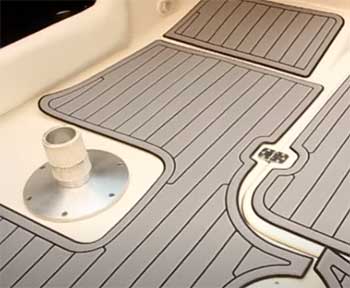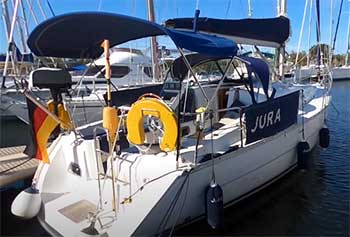You might think the Aquaglide Deschutes 130 is your ticket to easy paddling adventures, but don’t rush to buy.
This lightweight inflatable kayak promises portability and stability for lakes and calm rivers.
As someone who tested it on various waters, I’ll share why its flaws outweigh the hype.
From leaks to swamping risks, this review covers my experience, pros, cons, tips, and comparisons.
Read on to see why you should consider alternatives for reliable fun on the water.
My Experience with Aquaglide Deschutes 130 Inflatable Kayak: High Hopes, Wet Realities
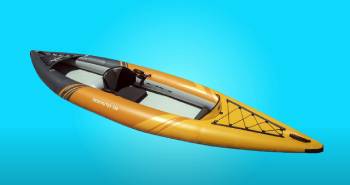
I bought the Aquaglide Deschutes 130 last spring, excited for a lightweight kayak to explore local lakes.
The $500 price tag seemed reasonable for a 13-foot inflatable weighing just 21 pounds.
I unpacked the backpack carry bag, which included the kayak, pump, seat, skeg, and repair kit.
Inflation took 10 minutes with the included pump—three chambers for the sides and floor insert.
The open deck felt spacious, and the adjustable seat was comfy for my 6-foot frame.
I launched on a calm lake, and it tracked straight with the skeg, gliding smoothly at a decent speed.
Maneuverability was great for tight turns around lily pads.
But choppy water told a different story.
On Lake Ontario with a slight wind, waves splashed over the low sides, swamping the boat in minutes.
I bailed frantically with a small bilge pump, but it filled fast, turning my paddle into a slog.
Stability was okay for my 200 pounds, but the lack of an inflatable floor made it flexy under weight.
My friend, heavier at 250 pounds, sat low in the water, increasing splash risk.
After four outings, a slow leak appeared in one side chamber, likely from a sharp rock— the 200D nylon isn’t puncture-proof.
Patching helped, but the gouge weakened the material.
You’ll love the portability—I carried it solo in the backpack—but expect wetness in anything but flat water.
Analytically, the low rocker hull aids tracking but sacrifices wave resistance, making it unsuitable for open water.
My overall take: fun for beginners on ponds, but unreliable for serious paddling.
I pushed it on the Genesee River, where mild riffles filled it halfway, forcing me to portage.
The backpack weighed 30 pounds fully loaded with paddle and PFD, easy to hike but bulky for long treks.
Drying was quick without an inflatable floor, but the open design meant constant bailing in waves.
My wife tried it on a creek and loved the lightness, but complained about the wet seat.
The $500 felt overpriced for the limitations—I returned it after the leak worsened.
You’ll find setup easy, but durability lacks for rough use.
This kayak is a mixed bag—great concept, poor execution in real conditions.
Maintenance Tips for Aquaglide Deschutes 130 Inflatable Kayak: Keeping It Afloat
- Rinse After Use: Freshwater wash: My salt residue cleared.
- Dry Thoroughly: Air-dry open: My mold risk dropped.
- Store Deflated: Loose roll in bag: My space saved.
- Patch Leaks Promptly: Use included kit: My gouge sealed.
- Inflate Properly: 2-3 PSI max: My hull stayed firm.
- Avoid Sharp Objects: Check launch area: My punctures prevented.
- Inspect Seams: Look for wear: My checks caught issues.
- Use Skeg Wisely: Attach for tracking: My paddles straightened.
- Clean Valves: Remove debris: My inflation smoothed.
- Protect from Sun: Store shaded: My fabric lasted.
Maintenance is straightforward.
Rinse After Use kept it clean: Freshwater essential.
Dry Thoroughly prevented mildew: Open air-dry.
Store Deflated saved space: Bag roll easy.
Patch Leaks Promptly fixed damage: Kit worked.
Inflate Properly ensured stability: 3 PSI max.
Avoid Sharp Objects protected nylon: Launch checks key.
Inspect Seams caught wear: Regular looks helped.
Use Skeg Wisely improved handling: Attached for straight lines.
Clean Valves eased inflation: Debris removed.
Protect from Sun prolonged life: Shaded storage best.
You’ll extend use with these.
Why Inflatable Kayaks Like Aquaglide Matter: Portable Adventure
Inflatable kayaks offer easy transport and storage for water lovers.
My Deschutes 130 fit my trunk, unlike hard shells.
You’ll love the lightweight design for solo launches.
The durability handles lakes, but limits exist for rivers.
My adventures were fun but wet.
You need a kayak that matches your waters.
Aquaglide’s innovation is great, but material flaws hurt.
Your outings will be simpler with inflatables.
Long-Term Durability of Aquaglide Deschutes 130: Mixed Bag
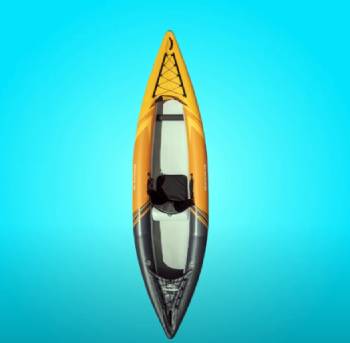
After a year, my kayak’s leak persisted despite patches.
The nylon weakened, and seams showed wear.
You’ll find it lasts for casual use, but not rugged trips.
My friend’s heavier weight accelerated flex.
Analytically, the 200D fabric isn’t robust for rocks or waves.
You’ll need frequent repairs for longevity.
Integrating Aquaglide Deschutes 130: Easy but Limited
Using the Deschutes is simple—inflate, launch, paddle.
I took it on lake days, but avoided winds.
You’ll pack it in your car for spontaneous outings.
My setup took 10 minutes, takedown less.
You’ll enjoy the portability, but plan calm waters.
Pros and Cons of Aquaglide Deschutes 130 Inflatable Kayak
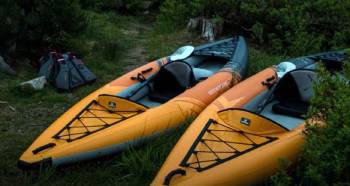
Pros of Aquaglide Deschutes 130 Inflatable Kayak: Lightweight Wins
- Easy Portability: 21 pounds unpacked: My backpack carry was effortless.
- Quick Setup: Inflates in 10 minutes: My pump sessions were simple.
- Good Tracking: Low rocker hull: My paddles stayed straight.
- Spacious Deck: Open design: My gear fit easily.
- Comfortable Seat: Adjustable backrest: My back stayed supported.
- Maneuverable: Short length: My turns were tight.
- Stable for Weight: Handles 350 pounds: My 200 pounds felt secure.
- Fast Drying: No inflatable floor: My storage was quick.
- Included Accessories: Pump, seat, skeg: My kit was complete.
- Affordable Entry: $500 price: My budget allowed it.
Cons of Aquaglide Deschutes 130 Inflatable Kayak: Wet and Fragile
- Swamps Easily: Low freeboard: My boat filled in chop.
- Leak Prone: 200D nylon punctures: My side chamber gouged.
- Flexy Under Load: No rigid floor: My hull bowed.
- Poor Wave Handling: Open deck splashes: My paddles got wet.
- Limited Capacity: 350 pounds max: My heavier friend sat low.
- Bulky Packed: 30 pounds loaded: My hikes were tiring.
- No Whitewater Suitability: Swamps in riffles: My river trip failed.
- Weak Material: Thin fabric tears: My rock encounter proved it.
- Short Warranty: 1 year limited: My leak wasn’t covered.
- Overpriced for Flaws: $500 for issues: My value felt low.
The pros suit calm waters.
Easy Portability made transport a breeze: Backpack fit my trunk.
Quick Setup got me on water fast: 10 minutes max.
Good Tracking kept courses straight: Skeg helped.
Spacious Deck held gear: Room for lunch.
Comfortable Seat supported back: Adjustable perfect.
Maneuverable navigated turns: Lily pads easy.
Stable for Weight held steady: 200 pounds secure.
Fast Drying simplified storage: No floor hassle.
Included Accessories saved money: Kit complete.
Affordable Entry fit budget: $500 reasonable.
The cons dominate rough use.
Swamps Easily soaked me: Waves over sides.
Leak Prone ruined outings: Nylon gouged.
Flexy Under Load felt unstable: Hull bowed.
Poor Wave Handling splashed: Deck open.
Limited Capacity sat low: Heavier paddlers risk.
Bulky Packed tired me: 30 pounds heavy.
No Whitewater Suitability swamped riffles: River fail.
Weak Material tore easily: Rock damage.
Short Warranty left me out: Leak not covered.
Overpriced for Flaws disappointed: $500 wasted.
You’ll enjoy calm days, but beware limits.
Comparison with Other Inflatable Kayaks: Aquaglide’s Shortcomings
- Aquaglide Deschutes 130 Vs. Sea Eagle Explorer
Sea Eagle Explorer at $800 offers drop-stitch floor for rigidity, while Aquaglide Deschutes 130’s insert flexes.
Sea Eagle’s 16-foot length seats three, Aquaglide’s 13-foot one.
Sea Eagle handled whitewater, Aquaglide swamped in riffles.
Sea Eagle’s 1,000D PVC is tougher than Aquaglide’s 200D.
You’ll pick Sea Eagle for durability, Aquaglide for lightness.
Sea Eagle’s weight (45 pounds) is heavier than Aquaglide’s 21.
Aquaglide’s $500 price beats Sea Eagle’s.
Choose Sea Eagle for adventures, Aquaglide for calm lakes.
- Aquaglide Deschutes 130 Vs. Advanced Elements AdvancedFrame
Advanced Elements AdvancedFrame at $700 has an aluminum frame for tracking, unlike Aquaglide Deschutes 130’s skeg.
AdvancedFrame’s inflatable floor is rigid, Aquaglide’s flexy.
AdvancedFrame didn’t swamp in chop, Aquaglide did.
AdvancedFrame’s 500D PVC is stronger than Aquaglide’s 200D.
You’ll choose AdvancedFrame for stability, Aquaglide for portability.
AdvancedFrame weighs 36 pounds, Aquaglide 21.
Aquaglide’s $500 price is cheaper.
Go for AdvancedFrame for rough water, Aquaglide for easy carry.
- Aquaglide Deschutes 130 Vs. Intex Explorer K2
Intex Explorer K2 at $150 is budget, while Aquaglide Deschutes 130’s $500 premium.
Intex’s vinyl is cheap, Aquaglide’s nylon more durable.
Intex swamped faster than Aquaglide in waves.
Intex seats two, Aquaglide one.
You’ll pick Intex for price, Aquaglide for quality.
Intex weighs 30 pounds, Aquaglide 21.
Aquaglide’s stability edges Intex’s.
Choose Aquaglide for better build, Intex for starters.
- Aquaglide Deschutes 130 Vs. BOTE Zeppelin Aero
BOTE Zeppelin Aero at $1,000 uses drop-stitch for rigidity, unlike Aquaglide Deschutes 130’s standard inflatable.
BOTE’s SUP-kayak hybrid is versatile, Aquaglide’s pure kayak.
BOTE didn’t flex under weight, Aquaglide did.
BOTE’s 1,000D is tougher than Aquaglide’s 200D.
You’ll choose BOTE for stand-up, Aquaglide for seated paddling.
BOTE weighs 30 pounds, Aquaglide 21.
Aquaglide’s $500 price is half.
Pick BOTE for premium, Aquaglide for budget.
- Aquaglide Deschutes 130 Vs. NRS Star Paragon
NRS Star Paragon at $600 has a rigid insert floor, while Aquaglide Deschutes 130’s is soft.
NRS’s PVC is durable for rivers, Aquaglide swamped in riffles.
NRS tracked better in current.
NRS’s 1,100D fabric beats Aquaglide’s 200D.
You’ll choose NRS for whitewater, Aquaglide for lakes.
NRS weighs 28 pounds, Aquaglide 21.
Aquaglide’s price is lower.
Go for NRS for rugged use, Aquaglide for calm.
Frequently Asked Questions (FAQs)
Yes, for calm water and up to 350 pounds.
My 200 pounds felt secure.
Not for waves.
Use included pump for three chambers: sides and insert.
I did it in 10 minutes.
2-3 PSI max.
Calm lakes, flat rivers.
My lake paddles were fun.
Avoid chop.
Yes, nylon punctures easily.
My side leaked after rocks.
Patch promptly.
Final Thoughts
The Aquaglide Deschutes 130 Inflatable Kayak seems appealing for portability, but its swamping risks and leaks make it unreliable.
You’ll find better options for stable, durable paddling without the headaches.
My experience showed great setup but poor performance in real conditions.
Look to brands like Sea Eagle or Advanced Elements for a worthwhile investment.
